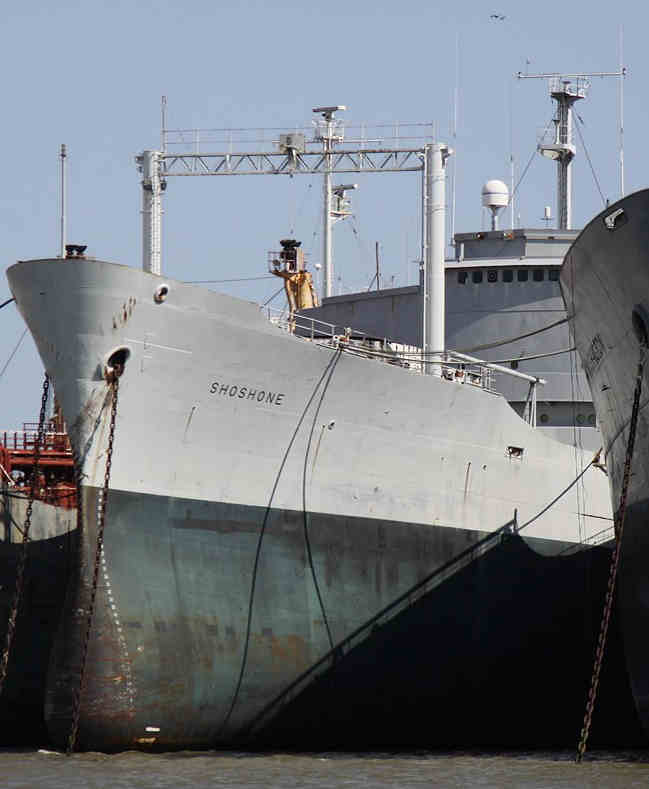
THE USNS SHOSHONE was towed from the Suisun Bay Reserve Fleet on Wednesday. It will be recycled in Texas.
navy.memorieshop.com
The ship, named for the Shoshone River in Wyoming, was towed from Suisun Bay on Wednesday for a dry-dock at BAE Systems San Francisco Ship Repair, where it will be cleaned of marine growth and any remaining flaking paint before departing for ESCO Marine Inc., in Brownsville, Texas, where it will be broken apart and recycled.
Built in 1957 by Sun Shipbuilding and Dry Dock Company in Chester, Pa., the Shoshone was intended for the Military Sea Transportation Service.
That later became Military Sealift Command, and the Shoshone operated out of fuel terminals in the Gulf of Mexico and supplied fuel to American bases in the Atlantic and Pacific until it was transferred to the Maritime Administration’s Suisun Bay Reserve Fleet in 1984.
Though its design was similar to other liquid cargo carriers, the Shoshone was larger than many other carriers.
The ship was crewed by 52 civilians during its service as point-to-point fuel oil and gasoline delivery to American military forces in both Atlantic and Pacific ports, according to Navy records. The Shoshone later was reclassified as a transport oiler.
By the mid-1970s, the ship was traveling along the ports of the United States Gulf Coast. It kept its original construction configuration throughout its career.
Its original service is estimated to have ended in the 1980s, but neither that date nor the day it was struck from the Naval Vessel Register was recorded. It was taken to Suisun Bay on Feb. 10, 1984.
It was taken to Mare Island Naval Shipyard in November 1990 for the fitting needed to upgrade the ship to “ready reserve” status, and early the next year it was activated for service in Desert Shield/Desert Storm in the Middle East.
But that activation was canceled in less than a month, and on Oct. 7, 1994, after being transferred to the Maritime Administration, the ship’s status was downgraded.
But the Shoshone’s career didn’t end at that point.
In 2001, it was towed to the Bay Ship and Yacht Shipyard in Richmond, where the Office of Naval Research used it as an experimental platform for MH Systems, which used the ship to demonstrate the American Underpressure System, a method of decreasing or stopping oil spillage from single- and double-hulled tankers in the event of rupture.
After the test, the ship was returned to the Reserve Fleet, where it remained until listed for disposal.






She was a good ship. I never feared any weather on her. Once while crossing the Columbia river bar in heavy weather we bottomed out twice, I happened to be steering at the time. It was a very bad feeling, you could feel the pain rack the ship from stem to stern. She groaned both times but when the survey was done she was as sound as ever. A very well built well used ship.